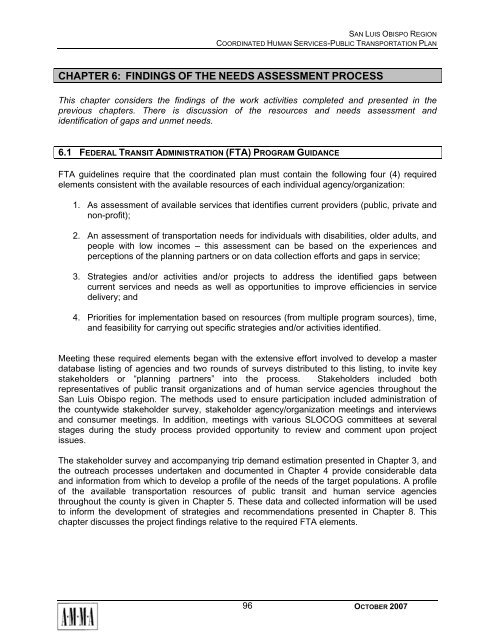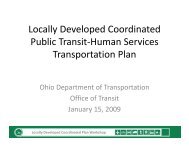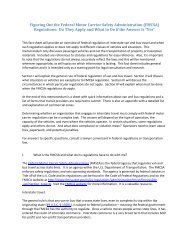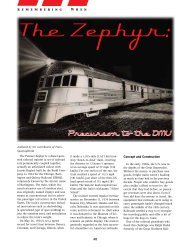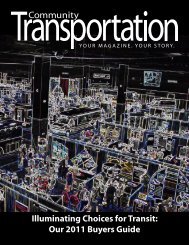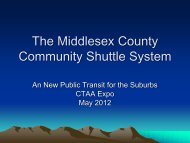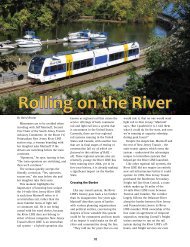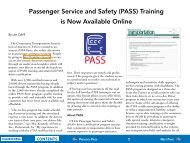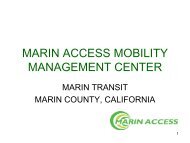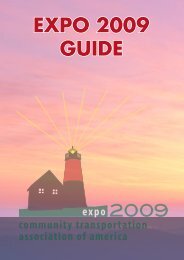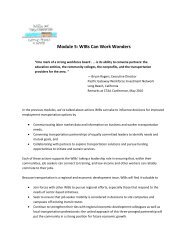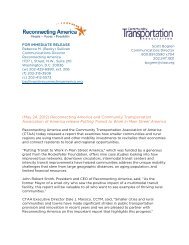San Luis Obispo - Caltrans - State of California
San Luis Obispo - Caltrans - State of California
San Luis Obispo - Caltrans - State of California
Create successful ePaper yourself
Turn your PDF publications into a flip-book with our unique Google optimized e-Paper software.
SAN LUIS OBISPO REGION<br />
COORDINATED HUMAN SERVICES-PUBLIC TRANSPORTATION PLAN<br />
CHAPTER 6: FINDINGS OF THE NEEDS ASSESSMENT PROCESS<br />
This chapter considers the findings <strong>of</strong> the work activities completed and presented in the<br />
previous chapters. There is discussion <strong>of</strong> the resources and needs assessment and<br />
identification <strong>of</strong> gaps and unmet needs.<br />
6.1 FEDERAL TRANSIT ADMINISTRATION (FTA) PROGRAM GUIDANCE<br />
FTA guidelines require that the coordinated plan must contain the following four (4) required<br />
elements consistent with the available resources <strong>of</strong> each individual agency/organization:<br />
1. As assessment <strong>of</strong> available services that identifies current providers (public, private and<br />
non-pr<strong>of</strong>it);<br />
2. An assessment <strong>of</strong> transportation needs for individuals with disabilities, older adults, and<br />
people with low incomes – this assessment can be based on the experiences and<br />
perceptions <strong>of</strong> the planning partners or on data collection efforts and gaps in service;<br />
3. Strategies and/or activities and/or projects to address the identified gaps between<br />
current services and needs as well as opportunities to improve efficiencies in service<br />
delivery; and<br />
4. Priorities for implementation based on resources (from multiple program sources), time,<br />
and feasibility for carrying out specific strategies and/or activities identified.<br />
Meeting these required elements began with the extensive effort involved to develop a master<br />
database listing <strong>of</strong> agencies and two rounds <strong>of</strong> surveys distributed to this listing, to invite key<br />
stakeholders or “planning partners” into the process. Stakeholders included both<br />
representatives <strong>of</strong> public transit organizations and <strong>of</strong> human service agencies throughout the<br />
<strong>San</strong> <strong>Luis</strong> <strong>Obispo</strong> region. The methods used to ensure participation included administration <strong>of</strong><br />
the countywide stakeholder survey, stakeholder agency/organization meetings and interviews<br />
and consumer meetings. In addition, meetings with various SLOCOG committees at several<br />
stages during the study process provided opportunity to review and comment upon project<br />
issues.<br />
The stakeholder survey and accompanying trip demand estimation presented in Chapter 3, and<br />
the outreach processes undertaken and documented in Chapter 4 provide considerable data<br />
and information from which to develop a pr<strong>of</strong>ile <strong>of</strong> the needs <strong>of</strong> the target populations. A pr<strong>of</strong>ile<br />
<strong>of</strong> the available transportation resources <strong>of</strong> public transit and human service agencies<br />
throughout the county is given in Chapter 5. These data and collected information will be used<br />
to inform the development <strong>of</strong> strategies and recommendations presented in Chapter 8. This<br />
chapter discusses the project findings relative to the required FTA elements.<br />
96<br />
OCTOBER 2007


